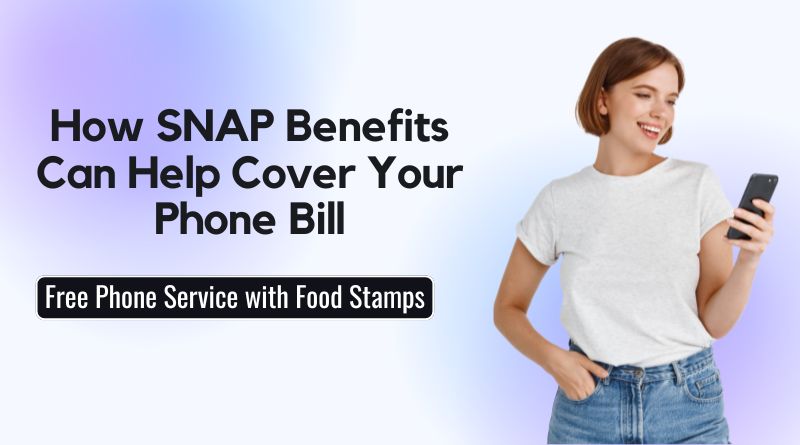In some U.S. states, you can include your phone bill as part of the Supplemental Nutrition Assistance Program (SNAP). Doing this could lower your countable income, which might help you get more benefits. Here’s a simple explanation of how SNAP benefits can help cover your phone bill
SNAP Utility Allowance
When you apply for SNAP benefits, the state looks at your household expenses to decide how much help you can get. A big part of this is the Standard Utility Allowance (SUA), which covers costs like electricity, gas, water, and sometimes even phone bills, depending on where you live. The SUA is a set amount that gets deducted from your income, which could make you eligible for more SNAP benefits.
Phone Bills
In some states, you can count your phone bill as part of your Standard Utility Allowance (SUA) when applying for or renewing SNAP benefits. This means you could deduct your phone expenses from your income, which might help you qualify for more assistance.
If your state offers this option, showing proof of your phone bill can be really helpful in getting the most out of your benefits. Including phone bills in the SUA is a big help for low-income households, making sure they can stay connected for important things like emergency calls, reaching out to family, or accessing vital services.
Lifeline Program
The Lifeline Program offers affordable phone service to low-income individuals, including those receiving SNAP benefits. Through this program, you can get a $15 account credit or 1 GB of free data each month. In some cases, you might even receive a free 5.5-inch phone if you don’t already have one. Lifeline helps low-income Americans stay connected, which is essential for reaching emergency services, finding job opportunities, and keeping in touch with family and friends.
State Variations
Not all states handle phone bills the same way when it comes to SNAP benefits. In some states, like Texas and Colorado, phone bills are included in the Standard Utility Allowance (SUA), but in others, they’re not. Because of this difference, it’s a good idea to check with your local SNAP office or visit their website to see how phone bills are treated where you live.
When states include phone bills in the SUA, it provides extra financial help to SNAP recipients. This can make it easier to afford phone services, allowing people to stay connected without cutting into their food budget.
Eligibility
To take advantage of this benefit, eligible individuals need to include their phone bill as part of their SNAP application or during the recertification process. The steps are simple, but it’s important to make sure all your paperwork is correct and up-to-date.
The Lifeline program has broader eligibility criteria. To qualify, your income must be 135% below the federal poverty line, or you must already be receiving benefits like SNAP, Medicaid, Supplemental Security Income (SSI), Federal Public Housing Assistance, or Veterans Pension and Survivors Benefit.
If you qualify, you can get discounts on your phone service, making it easier to stay connected without breaking the bank.
Understanding how phone bills can count toward SNAP’s Standard Utility Allowance (SUA) is key to getting the most out of your benefits. While not all states offer this option, it can lead to significant savings and extra support in those that do. Combined with the Lifeline program, these benefits help low-income Americans stay connected without having to choose between communication services and buying food.
FAQs
Which states cover phone bills in the SNAP Standard Utility Allowance (SUA)?
States like Texas and Colorado include phone bills as part of their SNAP SUA.
What is the Lifeline program?
The Lifeline program provides low-cost phone service to people with low incomes, including those receiving SNAP benefits.
How do I use SNAP benefits to help with my phone bill?
To get SNAP assistance for your phone bill, just submit your phone bill details when applying for or renewing your SNAP benefits.

